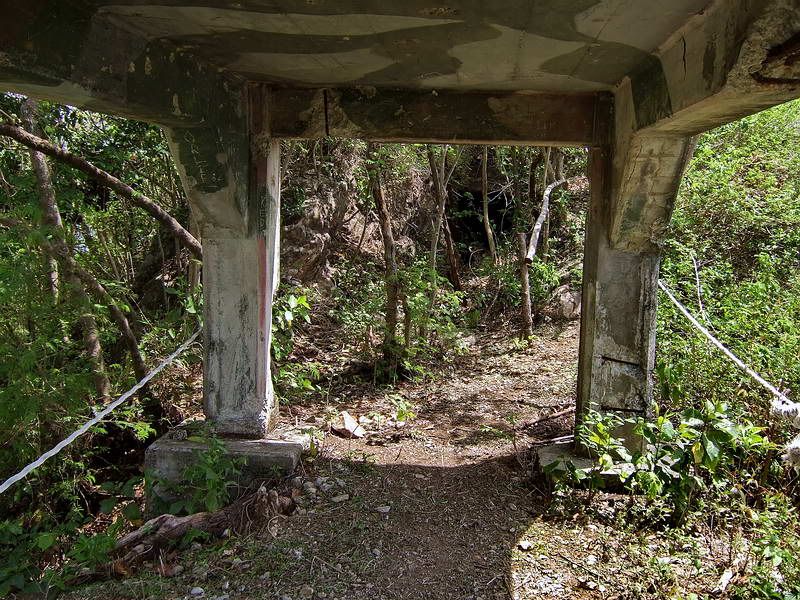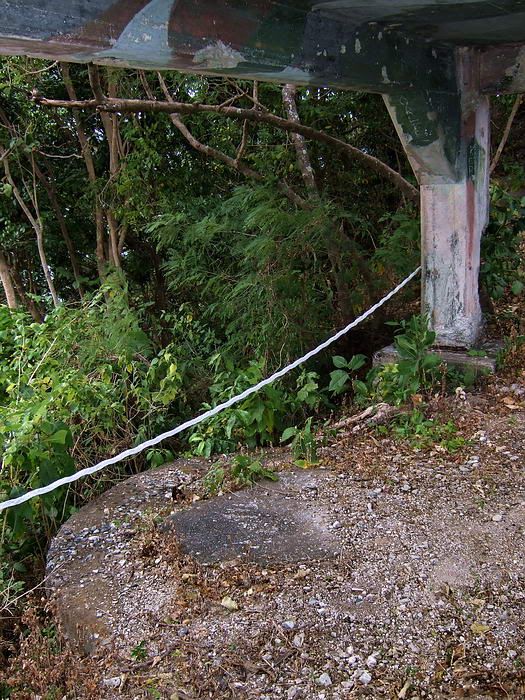|
|
Post by okla on Sept 2, 2012 6:14:28 GMT 8
Hey Fots....I would have thought that due to all the exposure you have received (in your mucking around in the "boonies",bushes, tunnels, etc) to every exotic, Oriental, SE Asian "Gonk" and/or "Mokus", that you would be immune to just about any malady to found West of the International Date Line. Anyhow, glad you have survived your latest affliction. The "Rock" awaits with more puzzles. Cheers.
|
|
|
|
Post by chadhill on Sept 3, 2012 4:03:42 GMT 8
We hope you've recovered well from your bout with dengue, fots. I thought something was up since you hadn't posted for a while. You were missed! Please kick back and take it easy- * * * * * We're on a new page, so I thought re-posting armyjunk's interesting diagram would be in order. It's made me rethink and maybe reSWAG some things about the top of Malinta Hill. (photo courtesy armyjunk)  At the top of the diagram is the Searchlight #8 tunnel. The air shaft is at the left end of the tunnel. At the bottom of the diagram is the magazine. Fots provided us with a recent photo of the front (south) entrance, and of the inside which shows the collapsed interior rear (east) entrance. See Reply #266. Here is a portion of armyjunk's aerial photo:  Underneath the yellow arrow there seems to be some steps. Can anyone say if they lead to the collapsed rear (east) entrance in armyjunk's diagram, which shows steps as well? To the lower right of the yellow arrow is the dark spot previously labeled as a possible shadow. I wonder if it too could be the entrance.  I am trying to get some situational awareness here, as to where the front and rear magazine entrances are in this photo. Thanks- |
|
|
|
Post by oozlefinch on Sept 4, 2012 7:58:41 GMT 8
With respect to the storage of ammo, does anyone have any thoughts on whether most of the lighter stuff (75mm, 3", 155mm, etc., was stored "under cover" or out in the open? I have read of ammo dumps blowing up from bombing and shelling, and I get the feeling that they were out in the open.
|
|
|
|
Post by oozlefinch on Sept 5, 2012 7:58:12 GMT 8
A thought on "gun shelters". I always had it in my mind that there was a concrete base/floor underneath the shelter; however, the shelter pictured on page 14 of this thread shows it was dirt with the four columns on pedestals. I know there were four shelters on top of Malinta, and two on the road up to Middleside in the Stockade area, and one above the Central Electric Storage Plant overlooking the North Harbor. Question: Does anyone remember whether all of these have a dirt base/floor?
|
|
|
|
Post by pdh54 on Sept 5, 2012 10:26:09 GMT 8
Hi Oozlefinch, Regarding your query about the ammo: In reading that book, Corregidor GI by Sgt. Leek, I get the impression when he is describing things blowing up during the bombings, that most of the ammo of whatever size was stored in buildings or bunkers. He is very wordy and hard to pay attention to sometimes though. I wouldn't think they would leave such stuff outside at the mercy of the elements, do you? Even if it was just a hut of some sort, I imagine they would cover ammo with more than a tarp. Now I have a question too. I thought there were only three gun shelters for 75mm guns on top of Malinta hill. If you look at the map, only three are shown. Two seem to be facing west and one east. Image deleted May 16 2015 due to a PIXXING contest In Fots' photo of the present day shelter, it shows a dirt floor, but he notes the following: "A few steps south (of the bunker-my emphasis) is a 75mm gun shelter. It is made of reinforced concrete, rectangular in shape with a floor, circular gun platform on the western side, four posts and a flat roof." page 1 of this thread, post #1. Maybe the platform has become covered with dirt over the years and only small parts of it can be seen if you are actually standing over it. Maybe Fots will feel well enough soon to set us straight about the platform. The platform shown in picture #3 on post 274 looks to be about 7 ft diameter, but if there wasn't that much room on the ridge line, maybe they did with a smaller base for pivoting the gun on. Chad's picture from the Japanese newsreel post 266 shows this 75 mm gun facing in a westerly direction on the western edge of the shelter. maybe the foundation was partly out of the cover of the shelter  The following photo of Fots's shows the west side of the ground eroded away now. Maybe most of the concrete base has gone too.  Patty |
|
|
|
Post by oozlefinch on Sept 5, 2012 12:03:48 GMT 8
I haven't been up there for six years, but if there is one where you have it marked near the East Defense Officer's Station, then there are two further south along the ridge. One is complete and the other was partially demolished and then scrapped back in the late '80's. As to the ammo dumps, I'm just not sure. Maybe it's just a matter of where they are located. Over on Bataan I doubt if they had many structures or bunkers where they could have stored the ammo. I'm sure on the Rock most of the smaller munitions were originally stored in the Malinta Complex, but when the battle progressed it could well have been disbursed to where it would be used and there may not have been a bunker available. If there were magazines available and used, it would have to have been a direct hit to blow it up. With the number of dumps that were being hit, I wonder if they were really under cover.
|
|
|
|
Post by fots2 on Sept 5, 2012 13:00:56 GMT 8
The 75mm gun platforms were flat rectangular pads with a one or two level circular section on the top. I assume the gun’s wheels strattled the circular section which allowed the gun to be easily rotated. A rail was commonly at the rear to stop the gun from being pushed backward by recoil during firing. These 75mm gun ‘platforms’ never became ‘shelters’ until wartime when reinforced concrete pedestals and a roof were added. The work was done to provide protection from dive bombers. (This was part of a project to reinforce some structures on the island. Text about releasing the money to do this is on Corregidor.org somewhere but I cannot find it at the moment). What we see today are mostly four pedestals and a roof. The floors are nearly all covered in soil and vegetation. Some sections of the concrete pad and rings can be seen though at some locations. One of them is the still intact gun shelter on top of Malinta Hill. This position faced west down onto Bottomside North.  Not all pads were covered with concrete roofs. One that was not is on the upper north side of Malinta Hill. You can clearly see the pad and ring.  More photos of it are here: corregidor.proboards.com/index.cgi?board=threads&action=display&thread=532&page=6 Reply #101. |
|
|
|
Post by oozlefinch on Sept 5, 2012 14:26:26 GMT 8
FOTS - Thanx for the explanation, and additional info.
|
|
|
|
Post by pdh54 on Sept 5, 2012 19:00:12 GMT 8
Thank you Fots for the additional information and photos You have such a treasure trove of pictures.
Hope you are back to 100% soon
Patty
|
|
|
|
Post by okla on Sept 5, 2012 20:44:44 GMT 8
Hey Patty....I often wonder at the collossal effort/ingenuity/etc that it must have taken to "horse" all that material/armament/etc up to the higher elevations of Malinta Hill. I would imagine the "residents" of Bilibid Prison may have played a major part in these endeavors. Brute strength, I think they call it. Again, I say, never having been fortunate enough to visit Corregidor, I am not "in the know" about a suitable roadway to the summit. If one existed my query is answered. Any ideas that might clear my befuddled mind??? Cheers.
|
|